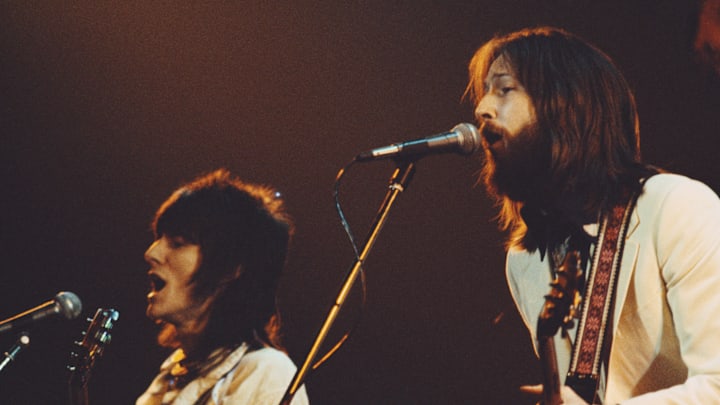Steve Winwood
I know what you're thinking. Steve Winwood, an icon? I mean, there are about four more Steves I could write about, amiright? Well, not so fast. True, he's better known as a lead singer than a musician. That brings up the old debate, whether vocalists qualify as musicians.
It certainly takes the same craftsmanship and artistry to perfect your tenor as it does a Fender bass, so, of course, vocalists are musicians. Besides, Winwood played keyboards, mandolin, bass, and percussion. More importantly, Winwood was a seminal member of some of rock's most influential bands.
He's a solid musician, but it's the tone of his soaring tenor that made him a star. Winwood first performed on stage with his father and older brother at the age of eight. He backed various artists on keyboards for several years, then hit it big with The Spencer Davis Group in 1963.
He was an old pro by then, at the advanced age of 14. The band had early successes in the UK, but struck gold at home and in the U.S. with the singles "Gimme Some Lovin'" and "I'm a Man" in 1966 and 1967, respectively.
Winwood left the band in 1967 and helped form Traffic that same year. This is where it gets complicated. The group released two albums, Mr. Fantasy in 1967 and Traffic in 1968, then broke up the following year. Last Exit was released in 1969, after the band was no longer together. The band reunited in 1970 - yes, just one year later.
They marked that occasion with their most successful U.S. release, John Barleycorn Must Die. Four more albums followed until they broke up again in 1974. Don't worry, Winwood and founding member Jim Capaldi reunited again 20 years later for the final Traffic album, Far From Home.
So what was Winwood doing after he left Traffic the first time? Oh, not much. Just forming the early supergroup Blind Faith with a few notable pals, one of whom will come up shortly. They produced one album, 1969's eponymous Blind Faith, before disbanding that same year. The album featured the plaintive classic "Can't Find My Way Home," along with "Presence of the Lord" and "Sea of Joy."
After his second departure from Traffic - I warned you it would be complicated - Winwood sat in with several groups before launching his solo career in 1977. His second solo album, 1980's Arc of a Diver, featured his first solo hit single, "While You See a Chance."
Another solo effort followed two years later, but Winwood struck platinum with the release of Back in the High Life in 1986. Its top single, "Higher Love," charted at number one, and the album won the Grammy for Record of the Year. Not too shabby for a guy who started as an eight-year-old keyboard player.
Continued on next slide...
